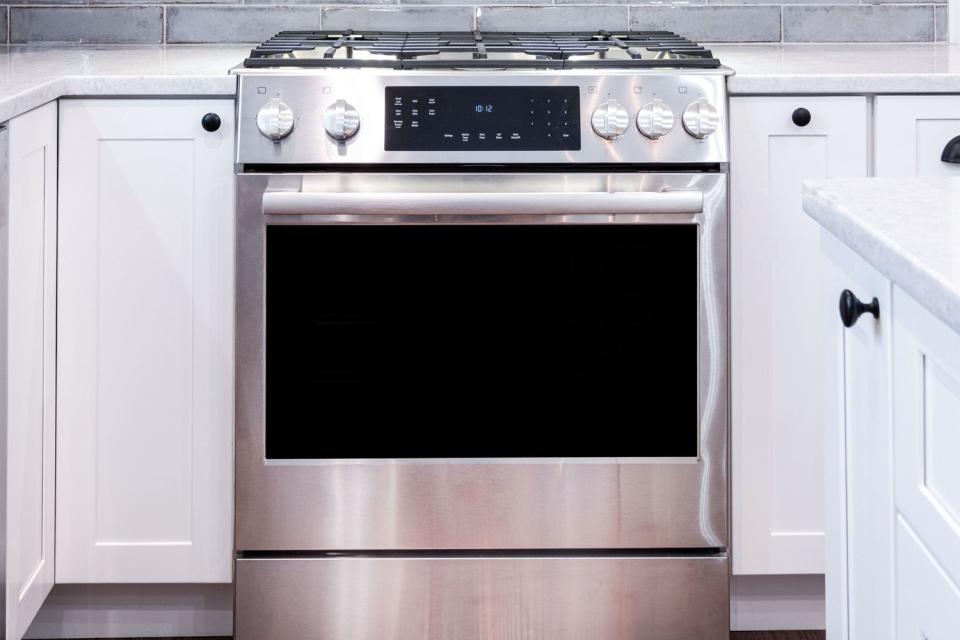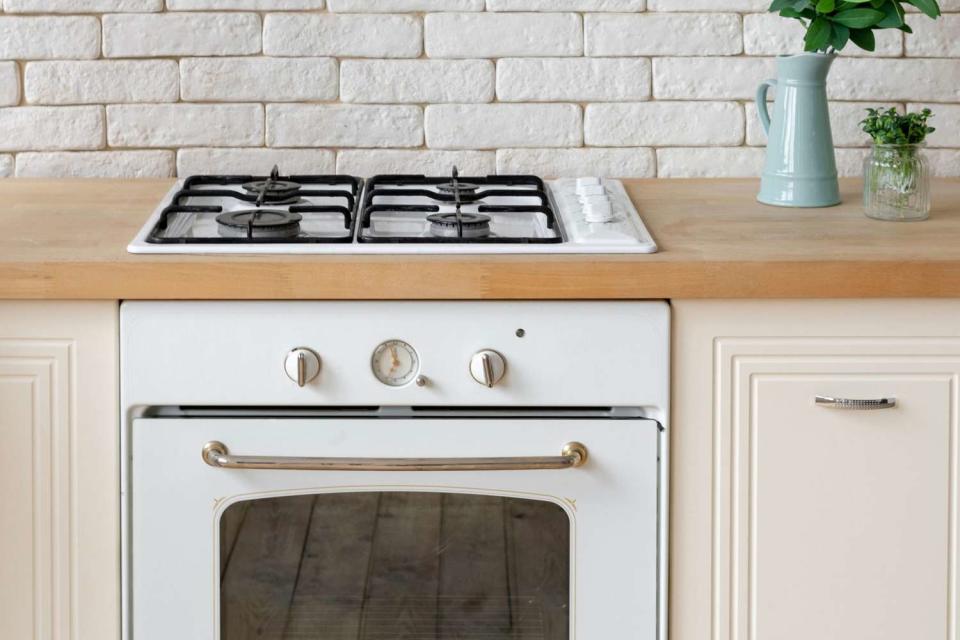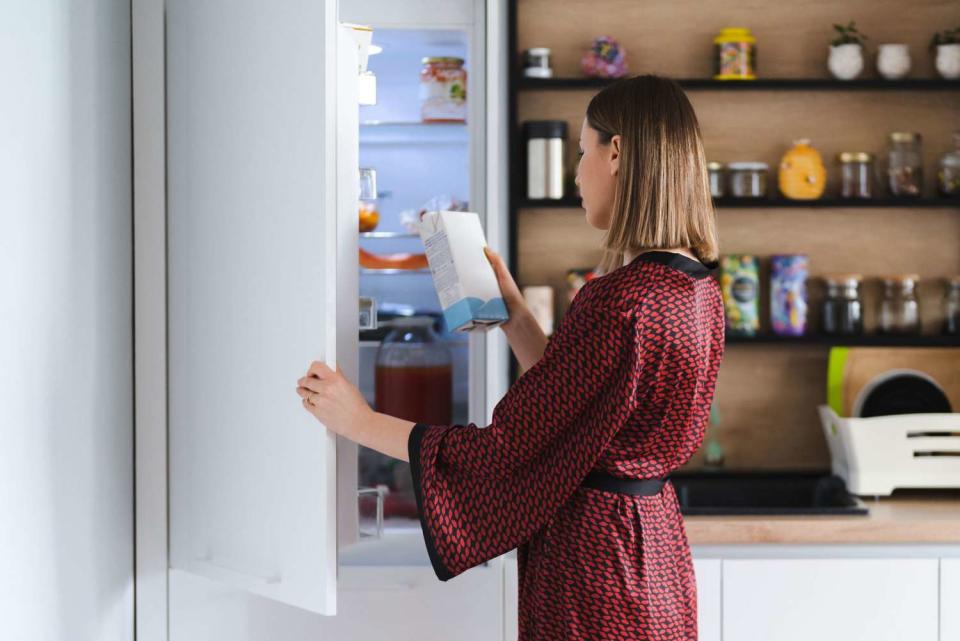8 Outdated Kitchen Appliance Trends to Avoid for Your Remodel, According to Experts
Kitchen appliance trends come and go, just like paint colors and denim styles. However, they're not as easy—or inexpensive—to update. Design professionals typically recommend remodeling your kitchen once every 10 to 15 years, not from one season to the next. That's why our favorite kitchens mostly stick to timeless choices. Martha's own kitchens are prime examples, with their warm wood finishes, paneled appliances, and touches of patinated brass.
You want your personality to feel present, too, especially in a room where you spend so much time with family and friends. And while paint colors and cabinetry styles can help you make this space your own, the right appliances can, as well. The key is to choose stylish options that will last and incorporate them wisely, in ways that will make cooking and cleaning easier for you—and skip the ones that feel tired.

GETTY IMAGES
To help you determine what's in and what's out, here are eight kitchen appliance trends to steer clear of, according to the pro chefs, designers, and kitchen appliance experts who are over them—and stylish alternatives to consider, instead.
Related: Outdated Kitchen Trends to Avoid

Bruce Peter Morin / GETTY IMAGES
Stainless Steel
Say goodbye (and good riddance) to that special cleaning spray. This finicky finish has lost its luster. If your budget doesn't allow for high-end brands, you might see fingerprints on your fridge door and dishwasher handle. Even worse, the stainless steel's color and brush pattern might not match up perfectly, even if two appliances came from the same brand. That's the kind of thing that can drive you crazy.
Black stainless steel in particular is out, says Metin Ozkuzey, president of Designer Appliances, an independent retailer in New Jersey. Some brands offered this special finish over the past few years, as matte black hardware and appliances grew popular. That phase, however, is finished. It wasn't always nice while it lasted, either. The black stainless steel finish was often applied only to the surface of an appliance and was prone to scratches that let the silver show through—which is not a look you'd want to live with long-term.
Consider Instead: Panel-Ready Appliances
These have fronts that are designed to be covered with a custom cabinet door, so that they blend in with the rest of your cabinets, resulting in a classic, high-end look. Ari Laing, the New Jersey food photographer, stylist, and recipe developer behind Well Seasoned Studio, is in the process of renovating her own home kitchen and chose panel-ready appliances from "a practicality standpoint (stainless steel leads to handprints everywhere!), but also for a seamless design," she explains. "When you get into larger sizes of fridge and freezer doors, that much stainless steel can make a home kitchen feel industrial."

GETTY IMAGES
Gas Ovens
"[I would never] go with a 48-inch rangetop that was accompanied by a full-size and a half-size oven underneath. You cannot fit anything into that teeny-tiny oven!" says Laing. Beyond the limited oven space, gas is only getting more expensive; it also releases fumes and cooking oils into your home that can hurt your air quality and make clean-up difficult.
Consider Instead: Electric Wall Ovens
Laing decided on an electric wall oven, which cooks more precisely than a gas iteration.This is a big reason why many cooks and bakers prefer them—and having one or two set into the wall means you'll never have to bend over to remove turkeys and other heavy dishes.
To make the most of your investment (and make any future updates simpler), go with a 30-inch electric wall oven, suggests Ozkuzey. Manufacturers are phasing out 27-inch options.

GETTY IMAGES
Traditional Electric Stovetops
"Electric coil stoves are out," says Ozkuzey. They used to be the only choice for many Americans, considering that only 38% of homes in the U.S. have access to natural gas, per the U.S. Energy Information Administration. Those homes are mostly located in the Northeast, where the gas is used for heating.
Traditional electric burners do boil water faster than gas burners, but aside from that, they don't have much going for them. It's a pain to scrape off burnt-on spills, and they scratch easily. They're also not energy efficient.
Consider Instead: Induction
"Induction cooktops are definitely gaining traction as a popular option," says Kate Hamilton Gray, an interior designer based in Brooklyn. Induction is even giving gas a run for its money, thanks to legislation promoting it.
Induction stovetops are fast, precise, and easy to clean—and they are often affordable, too. Don't be surprised if you start seeing more of them on social media and in magazines. "Manufacturers are investing in them, and all of the core brands offer one," says Ozkuzey. In the past, 36-inch induction ranges were harder to find, he says; 30-inch models designed to replace traditional electric stoves in apartments were the norm. Now, high-end brands are rolling out 36-inch models.

GETTY IMAGES
Industrial Size Refrigerators
This one is a bit controversial. Sub-Zero and True did just debut new 48-inch French door models. (More on those in a minute.) But a bank-vault-like fridge isn't your only option, nor is it always the most functional one for your family.
Consider Instead: Multiple Smaller Cooling Appliances
"I have more clients using smaller full-size refrigeration and adding secondary below-counter fridge/freezer drawers or beverage fridges," says Gray. Separating drinks from cooking ingredients can help streamline your kitchen's flow, since kids can grab juice boxes and seltzer and adults can serve themselves without getting in the cook's way.
The concept also frees up space in your main fridge for fresh groceries and leftovers, so fewer things get lost behind cans and bottles and go to waste. Your food can last longer, too, since family members won't be opening the main fridge for drinks all day long.

ArthurHidden / GETTY IMAGES
Over/Under Refrigerators
You probably don't need us to tell you that old-fashioned refrigerators with the freezer on top aren't the most cutting-edge choice. But you might not realize that refrigerators with a freezer door or drawer on the bottom and a single fridge compartment on the top have also fallen out of favor. According to Ozkuzey—and the new product launches we've seen recently—that's the way the market is moving.
Consider Instead: French Door Refrigerator
As we mentioned above, manufacturers including Sub-Zero and True have just rolled out new 48-inch models with French doors on top for the refrigerator and a freezer drawer on the bottom. So, what advantages do they have? For starters, you get double the door space for condiments and smaller items. The door swing is also half as wide, which allows for more clearance if you have an island in front of it. Opening your fridge doors wide also feels luxurious, like throwing open the windows at a fancy hotel.
Just don't get one with a built-in tablet computer. Those have fallen by the wayside, too, adds Ozkuzey. They're too much trouble to maintain.

GETTY IMAGES
Farmhouse Sink
This one is also potentially controversial, but hear us out. "We did want a farmhouse style sink, but our architects talked us out of it," says Laing. The reason? Although a ceramic sink is beautiful, it can scratch and mark up easily, especially if you like to cook with cast iron. A quick scrub with Bon Ami removes most marks, but that might not be something you want to do every night.
Consider Instead: Undermount Stainless Steel Sink
This is what Laing went with; she recommends one that fits seamlessly into the countertop and has built-in divots for hiding a drying rack. The effect is clean and minimalist. An undermount sink also gives you more countertop options, too, since there's no gap to retain moisture. If you want natural wood countertops, for example, an undermount metal sink is a must.

Pedro Alberto Perez / EyeM / GETTY IMAGES
Warm Metal Finishes
The sun has officially set on rose gold and copper tones. Appliance makers from Cafe to La Cornue have offered knob, pull, and handle options in them for the past few years. But as in jewelry and fashion, they're passé. "Rose-like colors did not make it through to 2022," says Ozkuzey.
Consider Instead: Patinated Brass
Brass plays well with other finishes, like nickel and oil rubbed bronze, and when it's unpolished, it is low maintenance and subtle.
Have a stove or refrigerator with handles or accents you're wishing you could swap out? Check with the manufacturer. You might be able to order a new trim kit to update it for a few hundred dollars.

GETTY IMAGES
The Kitchen Triangle
For eons, the kitchen triangle was the cornerstone of kitchen design. You wanted straight lines between your sink, stove, and refrigerator. However, this idea took hold when there was just one cook in the kitchen. Now, everybody hangs out (and hopefully helps!) in the kitchen at mealtime. That means the triangle can lead to major traffic jams.
Consider Instead: Cooking Zones
You can tailor these to your hobbies, whether it's baking cookies or making cafe-style coffee. For example, Laing prioritized features that speak to her and her husband's needs. In the butler pantry, there's a faucet for instant boiling hot or cold water. "My husband loves to make pour-overs in the morning and insisted on a proper coffee station setup," she says. "It will serve as an extra sink in our limited butler pantry space, but also alleviates the need for an electric kettle on the countertop."
She sprang for a warming station. "The one component of our new kitchen I absolutely insisted on was the inclusion of a warming shelf above my range," she explains. "It's essentially a shelf made of treated marble that will rest below heat lamps. To have the ability to keep one dish warm while I'm finishing another is going to be a game changer that I've longed for since my days of cooking in restaurants!"

